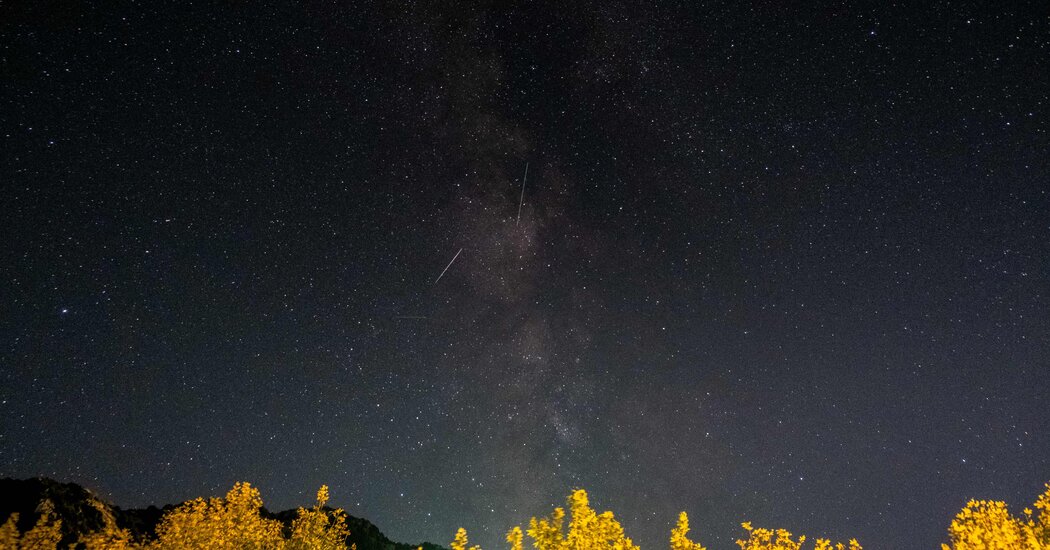
On any given night, far from bright city lights, there’s a chance that you’ll see a beautiful streak shoot across the sky as a meteor flies overhead. But on special dates scattered throughout the year, skywatchers can catch a multitude of flares as meteor showers burst in the darkness.
The next event is the Orionids, which lasts until about Nov. 22 but reaches its peak tonight, on Friday, Oct. 20, into the morning of Saturday, Oct. 21.
Meteor showers occur when our planet runs into the debris fields left behind by icy comets or rocky asteroids going around the sun. These small particles burn up in the atmosphere, leading to blazing trails of light. The regularity of orbital mechanics means that any given meteor shower happens at roughly the same time each year, with the changing phases of the bright moon being the main variable affecting their visibility.
After hitting the outbound trail of Halley’s comet in May, Earth every October runs into the debris the comet leaves as it heads toward the sun, producing the Orionid meteor shower. It is a medium-strength shower, usually producing 10 to 20 streaks per hour, although in exceptional years it can create up to 70 per hour.
The moon will be around a third full this year but will set around midnight, leaving the sky clear of its influence. The shower will be viewable all over the world between midnight and 4 a.m. local time.
Subscribe to the Times Space and Astronomy Calendar to get a reminder ahead of this and other events.
How to see a shower
The best practice is to head out to the countryside and get as far from artificial light sources as possible. People in rural areas may have the luxury of just stepping outside. But city-dwellers have options, too.
Many cities have an astronomical society that maintains a dedicated dark sky area. “I would suggest contacting them and finding out where they have their location,” Robert Lunsford, the secretary general of the International Meteor Organization, said in an interview with The New York Times in 2022.
Meteor showers are usually best viewed when the sky is darkest, after midnight but before sunrise. To see as many meteors as possible, wait 30 to 45 minutes after you get to your viewing location. That will allow your eyes to adjust to the dark. Then lie back and take in a large swath of the night sky. Clear nights, higher altitudes and times when the moon is slim or absent are best. Mr. Lunsford suggested a good rule of thumb: “The more stars you can see, the more meteors you can see.”
Binoculars or telescopes aren’t necessary for meteor showers, and in fact will limit your view.
How meteor showers form
Each shower peaks on a certain date when Earth is plowing into the densest portion of the debris field, though in some cases many meteors can still be seen before or after that specific night.
A shower is named for a constellation in the part of the sky it appears to streak from. But there’s no need to be perfectly versed in every detail of the celestial sphere. Meteors should be visible all over the sky during any given shower.
